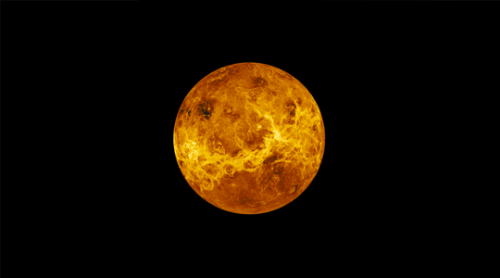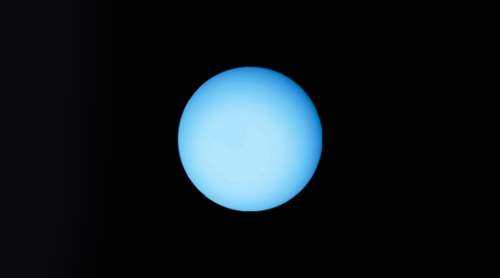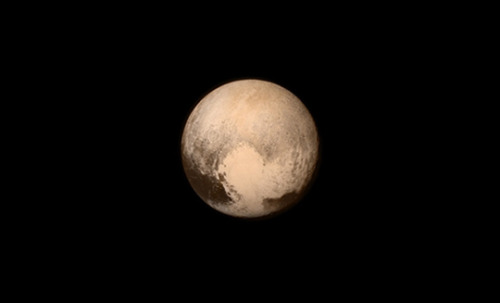I Need Help. So, You Know How When You’re In A Bus, Or In A Car, And You Throw Something Into The Air
I need help. So, you know how when you’re in a bus, or in a car, and you throw something into the air and it basically moves with the bus? It goes straight back down when you throw it up, as if the bus wasn’t moving. But the bus /is/ moving so PLEASE EXPLAIN WHY
More Posts from Theidlerhour and Others
(◡‿◡✿)
I wrote the wrong equation on the last problem on the exam, but some of you did heroic things with it.
Numerical analysis professor (via mathprofessorquotes)

Astronauts returning home from the ISS aboard a not so spacious Soyuz capsule
via reddit
When I think of how I see myself, it would have to be at age eleven. I know I’m thirty-two on the outside, but inside I’m eleven. I’m the girl in the picture with skinny arms and a crumpled skirt and crooked hair. I didn’t like school because all they saw was the outside me. School was lots of rules and sitting with your hands folded and being afraid all the time. I liked looking out the window and thinking. I liked staring at the girl across the way writing her name over and over again in red ink, or the boy in front of me who wore the same dim shirt every day. I imagined their lives and the houses they went home to each evening, wondering if their world was happy or sad.
Sandra Cisneros, from “Straw into Gold,” A House of My Own: Stories From My Life (via lifeinpoetry)
What is human existence? It turns out it’s pretty simple: We are dead stars, looking back up at the sky.
Dr. Michelle Thaller, NASA astronomer (via psych-facts)

Vantablack is a substance made of carbon nanotubules, and is the blackest substance ever created. It absorbs approximately 99.965% of visible light that hits it. When a photon strikes the material, instead of bouncing off of it (like most other surfaces), it becomes trapped in the nanotubules, continually deflecting from tube to tube before eventually becoming heat.
(Source)
Python: What if everything was a dict?
Java: What if everything was an object?
JavaScript: What if everything was a dict *and* an object?
C: What if everything was a pointer?
APL: What if everything was an array?
Tcl: What if everything was a string?
Prolog: What if everything was a term?
LISP: What if everything was a pair?
Scheme: What if everything was a function?
Haskell: What if everything was a monad?
Assembly: What if everything was a register?
Coq: What if everything was a type/proposition?
COBOL: WHAT IF EVERYTHING WAS UPPERCASE?
C#: What if everything was like Java, but different?
Ruby: What if everything was monkey patched?
Pascal: BEGIN What if everything was structured? END
C++: What if we added everything to the language?
C++11: What if we forgot to stop adding stuff?
Rust: What if garbage collection didn't exist?
Go: What if we tried designing C a second time?
Perl: What if shell, sed, and awk were one language?
Perl6: What if we took the joke too far?
PHP: What if we wanted to make SQL injection easier?
VB: What if we wanted to allow anyone to program?
VB.NET: What if we wanted to stop them again?
Forth: What if everything was a stack?
ColorForth: What if the stack was green?
PostScript: What if everything was printed at 600dpi?
XSLT: What if everything was an XML element?
Make: What if everything was a dependency?
m4: What if everything was incomprehensibly quoted?
Scala: What if Haskell ran on the JVM?
Clojure: What if LISP ran on the JVM?
Lua: What if game developers got tired of C++?
Mathematica: What if Stephen Wolfram invented everything?
Malbolge: What if there is no god?
in your opinion, what's going to happen when the physical properties of silicon can't sustain moore's law anymore
nothing, for two reasons
first some background: moore’s law states that every year the number of components (transistors) on integrated circuits will double (due to engineering breakthroughs). it has proved to be somewhat correct. it occurs due to our ability to manufacture smaller and smaller transistors which has a few effects, discussed later. eventually we will hit a point where it no longer matters how small we can print transistors as the fundamental electrical characteristics of silicon break down
in the next couple of years, we will see chips from intel with transistors printed about ten nanometers apart. we approach the limits silicon can handle, theoretically, around ~1nm
in circuits this small, you start seeing tunneling effects which are phenomenons of quantum physics wherein the propagation delay of charge falls to zero, meaning stimulation of the source terminal of a transistor would elicit a response on the drain terminal without any time elapsing. electrons just “blink” from one end of the xsistor to the other. you’d think this would be a good thing, but it isn’t. anyone with advanced physics degrees or deep VLSI knowlege is welcome to chime in why.
anyway
the first reason is there is no alternative to silicon. we have poured billions into researching things like gallium arsenide as a replacement for silicon in integrated circuits. it doesn’t work as well as silicon. people will try to convince you otherwise and those people are crackpots
we have poured a lot of time & money into researching quantum computers and discovered that they are only superior for very specific tasks such as brute-forcing encryption keys and other things of that nature. they will also probably never cost a billion dollars each to manufacture, never need anything less than a power plant and vats of liquid helium to operate, etc etc
the logical “next step” might be optical computing. here, you fundamentally change the hardware paradigm from electrons traveling through traces cut in a mediating silicon substrate between transistors to photons traveling through ?? mediated by ?? between “phototransistors”. the underlying principle is that light, in some cases, travels faster than voltage propagates through conductors. i’m going to get a lot of asks saying “durr kremlin but the speed of light is constant and i took high school physics and blah blah blah” and that’s a discussion worth its own post
this kind of tech is far off. not in our lifetime, not in your children’s lifetime, not in your children’s children’s lifetime
the reason we make transistors smaller is so we can pack them together more closely. this reduces the distance charge must travel in the circuit, making the cycles of these circuits take less time to complete. smaller transistors also generally necessitate less impedance and operate correctly at lower voltages, meaning their operating frequency can increase without a corresponding drop in reliability
these are all nice things, but they are only one piece of the puzzle. how you lay out these transistors is a much more critical and relevant problem. taking a previous VLSI design and shrinking it only works to a point after which you must redesign the layout entirely. intel’s “tick-tock” release/development department follows this model. long before and long after we hit the fundamental limits of silicon, the problem will be laying out our CPU circuits in such a way that we can actually eek out the performance provided by smaller transistors. this is a much, much harder problem to solve than “how do i make the transistor smaller”
the second, more pragmatic reason is that CPUs are fast enough already. there are scarce few problems that can be solved with faster discrete processors that can’t be solved with a million slower ones linked together
the whole tiny-transistor thing is really more of a marketing phenomenon than anything else
-
 camillesass reblogged this · 8 years ago
camillesass reblogged this · 8 years ago -
 styx-n-stone liked this · 8 years ago
styx-n-stone liked this · 8 years ago -
 starcarver liked this · 8 years ago
starcarver liked this · 8 years ago -
 redstonekate reblogged this · 8 years ago
redstonekate reblogged this · 8 years ago -
 tau-r liked this · 8 years ago
tau-r liked this · 8 years ago -
 acquiescental liked this · 8 years ago
acquiescental liked this · 8 years ago -
 jenip42 reblogged this · 8 years ago
jenip42 reblogged this · 8 years ago -
 noteven-triene reblogged this · 8 years ago
noteven-triene reblogged this · 8 years ago -
 noteven-triene liked this · 8 years ago
noteven-triene liked this · 8 years ago -
 zylien liked this · 9 years ago
zylien liked this · 9 years ago -
 -crazy-but-normal- liked this · 9 years ago
-crazy-but-normal- liked this · 9 years ago -
 empi99 reblogged this · 9 years ago
empi99 reblogged this · 9 years ago -
 bookworm1238-blog liked this · 9 years ago
bookworm1238-blog liked this · 9 years ago -
 pickthedayenjoyit liked this · 9 years ago
pickthedayenjoyit liked this · 9 years ago -
 charizard-charizard-blog reblogged this · 9 years ago
charizard-charizard-blog reblogged this · 9 years ago -
 leefshrub-blog liked this · 9 years ago
leefshrub-blog liked this · 9 years ago -
 yikeroni liked this · 9 years ago
yikeroni liked this · 9 years ago -
 wrecked-solitary-here reblogged this · 9 years ago
wrecked-solitary-here reblogged this · 9 years ago -
 geekatron15 reblogged this · 9 years ago
geekatron15 reblogged this · 9 years ago -
 geekatron15 liked this · 9 years ago
geekatron15 liked this · 9 years ago -
 sad-boy-lonely-planet-blog liked this · 9 years ago
sad-boy-lonely-planet-blog liked this · 9 years ago -
 fairytail-ship-obsessed liked this · 9 years ago
fairytail-ship-obsessed liked this · 9 years ago -
 luckycharms15213-blog reblogged this · 9 years ago
luckycharms15213-blog reblogged this · 9 years ago -
 luckycharms15213-blog reblogged this · 9 years ago
luckycharms15213-blog reblogged this · 9 years ago -
 trivialarmor liked this · 9 years ago
trivialarmor liked this · 9 years ago -
 therunningklawon liked this · 9 years ago
therunningklawon liked this · 9 years ago -
 shippingthingslikeaqueen reblogged this · 9 years ago
shippingthingslikeaqueen reblogged this · 9 years ago -
 shippingthingslikeaqueen liked this · 9 years ago
shippingthingslikeaqueen liked this · 9 years ago -
 melanausaurus liked this · 9 years ago
melanausaurus liked this · 9 years ago -
 tearfulmelody liked this · 9 years ago
tearfulmelody liked this · 9 years ago -
 croakusisconfused liked this · 9 years ago
croakusisconfused liked this · 9 years ago -
 dinosaur-cats reblogged this · 9 years ago
dinosaur-cats reblogged this · 9 years ago -
 abjellyfish liked this · 9 years ago
abjellyfish liked this · 9 years ago -
 abjellyfish reblogged this · 9 years ago
abjellyfish reblogged this · 9 years ago
"To awaken my spirit through hard work and dedicate my life to knowledge... What do you seek?"
229 posts

















